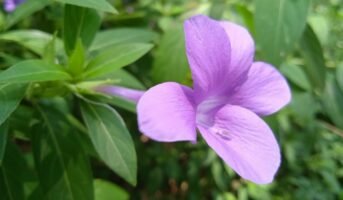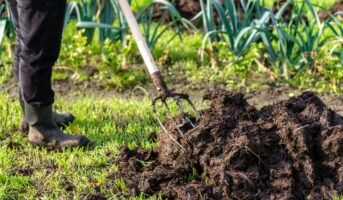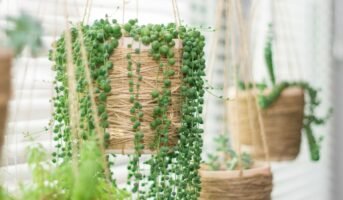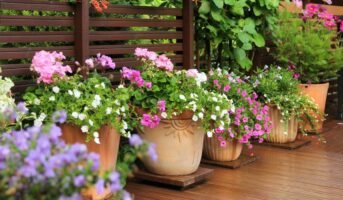
What is a Syngonium Podophyllum plant?
Syngonium Podophyllum is a familiar house plant. The common names of the plant are arrowhead plant, arrowhead vine, goosefoot, and American evergreen. This plant species is native to Latin America, West Indies, Florida, Texas, and Hawaii. It climbs up a few meters on top of tree trunks of tropical trees and clings by the roots. If cultivated indoors, the plant reaches a height of up to 1.5m. During a year, the plant grows a few leaves and is 30cm tall. A single leaf in an arrow shape is about 30cm long.
The leaves are dark green in the wild, whereas when cultivated indoors, the leaves have various shades of green. It has small flowers, which do not grow when cultivated indoors. The plant can be produced annually. As the plant matures, the leaves change shape. Following is the summary of the plant.
| Common Name | Arrowhead Plant |
| Botanical Name | Syngonium podophyllum, Syngonium macrophyllum |
| Other common Names | White butterfly, Arrowhead vine |
| Family | Araceae |
| General Description | The plant is frequently seen as an indoor plant and in gardens where it can climb up on other trees and plants. |
| Flowers | There may be small green or white flowers, which grow less than one inch. They bloom during the summertime. |
| Leaves | Juvenile leaves are alternate, simple, and arrow-shaped. They are dark green above and paler underneath. Around 5-7 leaves are seen when the plant matures. The leaves can measure up to 30cm. |
| Fruit/Berries | None |
Syngonium Podophyllum: History of introduction and spread
The plant has been extensively used in tropical and subtropical regions as an ornament or house plant. Determining the year of introduction in the different areas is difficult. In the West Indies, the plant is commonly planted in gardens of the islands. The first record of this species is for the Caribbean area from a collection made in Cuba in 1953.
The risk of spreading this plant is high as it grows fast and is widely planted in homes and gardens. This plant has a chance of being invasive and is still being sold in nurseries and landscapes worldwide. The plant is habitual to environmental conditions in both disturbed and undisturbed forests. The native habitat of the plant is in the moist forests of Central America.
Syngonium Podophyllum: Biology and ecology
There have been no solid reports about any pollinators for the plant, but it is suspected that scarab beetles may be pollinating these plants. Some of these plants produce fruits that produce seeds to help with pollination.
However, this is seen in some regions and not in others. The plant spreads by seeds and vegetatively. Generally, birds may distribute the roots, and stem cuttings also help to spread the plants.
Syngonium Podophyllum: Cultivation
As the Syngonium Podophyllum plant is a vine, it needs support for growth. Therefore, the soil should be humus and watered systematically. These plant varieties with pink, reddish, or white markings require development in a well-lit place. Plants with darker green leaves can be grown in a dark place.
The plants prefer moist air and should be watered two to three times a week during summers and less during winters. For adequate humidity, you should place the plant pot in a large container containing moist peat sprayed with water daily.
Dusty leaves of the plant should be wiped clean with a damp cloth. In summers, you can feed the plant a bit of fertilizer mixed in water. Syngonium Podophyllum becomes unattractive after cultivating for a few years and should be transplanted.
Syngonium Podophyllum: Varieties
In the wild, there are two traditional varieties of the plant that are recognized.
- Syngonium podophyllum var. peliocladum
- Syngonium podophyllum var. podophyllum
The first variety is native to Costa Rica and Panama. The second variety is native from Mexico to Brazil and Bolivia. It is also known to grow in Florida, Texas, Hawaii, Borneo, and Malaysia.
Syngonium Podophyllum: Benefits
- Syngonium Podophyllum plants are known to have air-purifying properties, capable of removing VOCs such as formaldehyde, benzene, toluene, and xylene. Additionally, they also help in absorbing CO2.
- Syngonium Podophyllum plants are easy to grow and maintain.
- The plant is widely grown as an indoor plant as it also helps boost humidity and reduce dry air in homes.
Feng Shui Benefits
Syngonium plants have distinct leaves varying in shape such as arrow shaped and five-lobed pattern that symbolise the five elements – Earth, Metal, Water, Fire, and Wood, They help in achieving an ideal Yin Yang balance and ensure the flow of positive chi energy. Keeping Syngonium plants at home also help reduce stress and anxiety.
Syngonium Podophyllum: Toxicity
All parts of this plant are poisonous, causing severe pain in the mouth if consumed. These plants can also cause intense burning sensations on the skin and even eye damage from the chemical released. Other symptoms that may occur if eaten are gastric irritation, salivation, tingling or burning sensation of mouth, tongue, and lips, followed by swelling.
Syngonium Podophyllum: A beginner’s guide
If you are growing Syngonium Podophyllum at home, it is important to note that arrowhead vines prefer to spread out and extended in all directions. Some varieties such as the allusion series tend to remain more compact. However, there are other varieties such as White Butterfly that spread in all directions. Thus, pruning them back is recommended. The plant can adapt to varying conditions. Train them to grow on a stake, wall or trellis.
Syngonium Podophyllum: Care and maintenance
- Light: These plants do well in a well-lit area but not in direct sunlight.
- Watering: These thirsty plants require watering at least twice a week. When watering, the soil should be evenly moist and dry before watering it again. The plant is less frequent in winter as the soil takes time to dry out.
- Humidity: Average room temperatures are suitable for the plant. The plant needs adequate moisture as dry air encourages brown leaf crisping.
- Feeding: Feeding the plant a few times a month is a healthy habit. If there are any doubts, then using fertilizer is not deemed necessary.
- Temperature: A minimum of 16 degrees Celsius is required for this plant to grow.
- Repotting: Small pots are adequate for this plant to grow; however, if required, one may transfer the plant to a larger pot.
- Propagation: Propagation requires cutting the roots and placing them in water or compost.
Syngonium Podophyllum: A unique house plant
Syngonium Podophyllum is a house plant with a distinctive shape, making it easy to recognize. The plant looks like a “poofy” dandelion (hence the name) with small leaves and large white flowers.
As a houseplant, it needs bright, indirect light. If you’ve got a window with just one side getting enough light, move the plant to an east-facing window until it’s happy in its new spot. It will also do well in full sun if planted in a large container with good drainage. It proliferates, reaching up to 3 feet in height within a year. It’s one of the easiest plants to grow if you want a fast-growing houseplant that will look nice in your home.
Syngonium plant growth problems
There may be problems in growing the plant. One needs to look for the symptoms and address them.
- Lanky and Floppy Plant: This may happen if general maintenance and pruning are avoided for an extended period. Repotting the entire plant helps solve this.
- Crisp Brown Leaves: Crisp brown leaves usually show low humidity.
- Variegation Changing: Incorrect light conditions can cause this. However, the leaves change color as they grow. Hence this may be a natural phenomenon as well.
- Pests: Pests are infrequent. However, one should look out for spiders.
Conclusion
Plant collectors love arrowhead plants as there are plenty of varieties of this plant. These plants are also perfect for those with little to no experience with plants. They can live a long time without needing much light and fertilizer. These plants can also grow the way one would like. As this plant is a vine, it is a very adaptable plant that can grow on a stake, trellis, or even a wall.
FAQs
The most common name for this plant?
Arrowhead Plant.
How is this used as a houseplant?
It is a versatile houseplant. Only modest care is needed, and it is a great-looking plant. It is fast-growing and lush. It makes a beautiful trailing and climbing vine.
One key point for taking care of the Arrowhead plant is?
The key is to wait in between watering the plant. At least 3-5cm of the soil should be dry for this plant to be watered again.
What is the one benefit of this plant?
It is an excellent low-maintenance plant and is thus loved by planters and non-planters alike.
What does this plant have that makes it poisonous?
The sap has calcium oxalate crystals that are toxic to pets and people, causing skin irritations. Therefore, wearing gloves when handling this plant is recommended.
| Got any questions or point of view on our article? We would love to hear from you. Write to our Editor-in-Chief Jhumur Ghosh at jhumur.ghosh1@housing.com |
Housing News Desk is the news desk of leading online real estate portal, Housing.com. Housing News Desk focuses on a variety of topics such as real estate laws, taxes, current news, property trends, home loans, rentals, décor, green homes, home improvement, etc. The main objective of the news desk, is to cover the real estate sector from the perspective of providing information that is useful to the end-user.
Facebook: https://www.facebook.com/housing.com/
Twitter: https://twitter.com/Housing
Email: editor@housing.com












